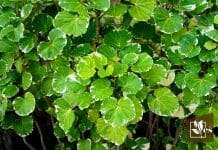Understanding how often to water boxwoods is essential for maintaining the health and appearance of these popular garden shrubs. Boxwoods are known for their versatile use in landscapes, serving as hedges, borders, and focal points. My guidance ensures that whether you’re a seasoned gardener or a beginner, you can confidently provide the care these plants need.

Boxwoods require a well-balanced watering routine; neither too much nor too little. The key to successful boxwood care lies in the soil moisture. After the initial planting, boxwoods should be kept consistently moist to establish their root systems. Once established, typically after about two years, these hardy shrubs become more drought-tolerant, though they do still require regular watering. Balancing these needs can be a bit tricky, but I will help you recognize when your boxwoods need water and how to prevent common watering issues.
A general tip is to check the soil moisture by feeling for dryness a few inches below the surface. If the soil is dry at that depth, it usually indicates that watering is necessary. Throughout the growing season, I make a note to observe my plants and the weather to adjust my watering schedule accordingly. Adequate water during dry spells, combined with proper soil preparation, ensures that my boxwoods remain healthy and vibrant throughout the year.
JUMP TO TOPIC
Selecting the Right Boxwood for Your Garden
When choosing a boxwood for my garden, I consider the specific species that will thrive in my climate and soil type, ensuring I select a variety that matches my garden’s environmental conditions.
Understanding Boxwood Varieties and Species
💥 Boxwood Species
Boxwoods are versatile shrubs, with species ranging from the American boxwood (Buxus sempervirens), which can grow up to 10 feet tall, to the smaller English boxwood (Buxus sempervirens ‘Suffruticosa’), growing slowly to a height of 3 or 4 feet. The species I choose will depend on the desired size and shape for my garden, as some are better suited for hedges while others are preferred for standalone features.
Assessing Your Garden’s Climate and Soil Type
Climate and Hardiness Zones. Boxwoods are hardy in USDA zones 5 through 9. They require well-draining sandy loam and, ideally, 6 hours of direct sunlight a day to maintain dense foliage. When analyzing my garden, I take note of the sunlight it receives — whether it’s full sun or partial shade — as well as the local climate conditions, including minimum winter temperatures.
💥 Soil Type
Soil type is another pivotal factor. Boxwoods prefer a pH range of 6.5 to 7.0. Before planting, I test my garden’s soil pH and adjust it if necessary by adding lime for increasing pH or sulfur for lowering it. Ensuring proper soil conditions is crucial for the boxwoods to thrive and showcase their lush greenery.
Planting and Cultivating Healthy Boxwoods
Proper planting and care are key to cultivating thriving boxwood shrubs. These steps include specific planting techniques, preparing the soil with the right conditions, and understanding moisture needs to avoid over or under-watering.
Ideal Planting Techniques
When planting boxwoods, I ensure the hole is twice as wide as the root ball and just as deep. This gives the roots space to expand and access to oxygen. It’s important to position the shrub so that the point where the roots flare out is level with the soil surface.
Soil Preparation and Mulching
I prepare the soil by mixing in organic matter to create a loamy texture, which promotes adequate drainage and prevents root rot. After planting, I apply mulch around the base to conserve soil moisture and regulate temperature. However, I’m careful not to let the mulch touch the stem to prevent issues with dampness.
Watering Requirements and Techniques
Boxwoods require consistent moisture, especially during the establishment phase. I water new plants with about an inch of water weekly, depending on rainfall. For established boxwoods, I check the top few inches of soil and water them only when it feels dry. I prefer using a soaker hose for a slow and deep irrigation, which encourages strong root systems.
Essential Boxwood Care and Maintenance
Successful boxwood care requires attention to pruning, fertilizing, and protection from pests and diseases. These evergreen shrubs thrive with the right balance of maintenance practices.
Pruning and Shaping Boxwoods
Pruning is crucial for maintaining the shape and health of boxwoods. I recommend doing this in late winter or early spring before new growth starts. Avoid heavy pruning late in the season, as this can lead to damage in winter.
💚 Pruning Tips:
- Use clean, sharp tools.
- Remove dead or diseased branches first.
- Trim for shape and size control.
Fertilizing for Optimal Health and Growth
Boxwoods benefit from fertilizing, particularly in early spring and potentially again in mid-summer. I use a balanced, all-purpose fertilizer to promote healthy, vibrant foliage.
🤎 Fertilizer:
Apply a balanced 10-10-10 NPK fertilizer.
Protecting Boxwood from Pests and Diseases
Pests like boxwood leafminers, spider mites, and boxwood blight can be problematic. Regular inspections and prompt treatment with insecticidal soap or fungicides as needed are important to keep your boxwoods in good health.
⚠️ A Warning:
Boxwood blight symptoms like brown spots on leaves and black streaks on stems.
Troubleshooting Common Boxwood Problems
In my experience, accurate diagnosis and prompt care are vital when dealing with boxwood issues. Let’s break down the signs of stress and appropriate revival techniques.
Recognizing Symptoms of Stress and Disease
When I inspect boxwoods for signs of stress or disease, certain indicators are unmistakable. Yellow leaves often signal root rot or drought, while bronzing might suggest winter damage. If leaves appear wilted or dry, it’s typically because of under-watering or drought conditions. Here are the symptoms that should prompt immediate attention:
💚 Bronzing leaves: Often a response to cold weather or winter burn.
🥀 Wilted foliage: Usually a sign of dehydration or a root system issue.
Reviving Struggling Boxwoods
When I take steps to revive struggling boxwoods, it’s important to address the specific problem they face. For example, if the issue is over-watering, it’s crucial to reduce the frequency and give the soil time to dry. Conversely, during drought, a deep, thorough watering is necessary. If disease is present, like root rot, removing affected parts and improving drainage is often the best course of action. Here’s my quick guide to revival strategies:
🌱 Under-watering/Drought: Provide a deep, soaking watering.
🌳 Root rot: Improve soil drainage and trim away rotted roots.
🍄 Fungal Diseases: Remove infected foliage and apply appropriate fungicides.
In my practice, these measures, combined with regular monitoring, greatly improve the chances of recovery.












